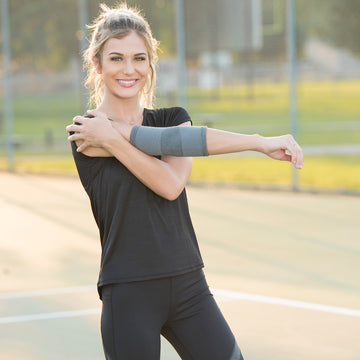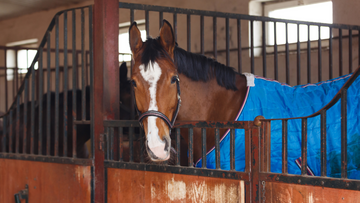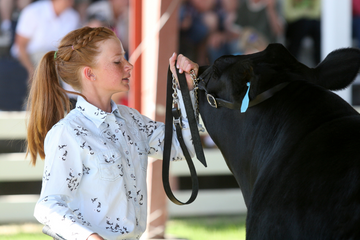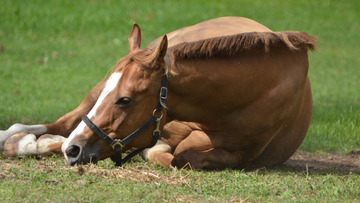When it comes to caring for horses, one essential aspect to consider is the use of horse blankets. Blanketing not only provides comfort and warmth but also protection from various weather conditions and can ultimately contribute to the overall health and well-being of the equine. This comprehensive guide covers all the important factors regarding blanketing, ensuring your horse receives the appropriate care throughout the year.
Types of Horse Blankets
Turnout Blankets
Turnout blankets are designed to keep horses warm and dry when they are outside in the pasture. They are typically waterproof and breathable, allowing moisture to escape while retaining heat.
Stable Blankets
Stable blankets are primarily used in indoor environments such as barns or stalls. They are not waterproof and should not be used outdoors during wet or snowy weather. The Benefab SmartScrim + SmartHood are a great way to provide light protection while also providing the benefit of Far-infrared technology and therapeutic magnets.
Lightweight Blanket
A lightweight blanket is ideal for mild weather conditions or horses with thicker natural coats. These blankets usually have a lower insulation level.
Medium-weight Blanket
Medium-weight blankets offer a little more insulation than lightweight blankets. They are suitable for moderate weather conditions or for horses that require additional warmth due to their breed type or natural coat.
Heavyweight Blankets
Heavyweight blankets provide the most warmth and protection for horses in cold climates or those with thin coats. These blankets have a high insulation level and are often used in conjunction with other layers, such as a rain sheet or stable blanket, during extreme weather conditions.
Rain Sheet
Rain sheets are lightweight, waterproof covers that protect horses from rain and wind. They can be used alone or in combination with other blankets for added protection.
Fly sheets
Fly sheets are lightweight, breathable covers specifically designed to protect horses from flies and other insects. They are made from mesh or other lightweight materials with small openings that prevent bugs from reaching the horse's skin.
Factors to Consider When Blanketing Horses
Climate Conditions
In winter or colder regions, a heavy blanket might be necessary to keep the horse warm and dry. Cold temperatures and wind can lead to discomfort if the horse is not adequately covered.
Horse's Age and Health
The age and health of a horse also play a significant role in determining the need for blanketing. Senior horses and horses suffering from health issues may have a harder time regulating their body temperatures. Always consult with a veterinarian to address the specific needs of a horse with health concerns.
Horse's Body Condition
 Evaluating the horse's body condition is crucial when deciding on the proper type of blanket. A horse with a higher body condition score will have more insulation from its body fat and may require a lighter blanket. Conversely, horses with a low body condition score or lacking an adequate winter coat may need a heavier blanket to stay warm and comfortable during colder climates.
Evaluating the horse's body condition is crucial when deciding on the proper type of blanket. A horse with a higher body condition score will have more insulation from its body fat and may require a lighter blanket. Conversely, horses with a low body condition score or lacking an adequate winter coat may need a heavier blanket to stay warm and comfortable during colder climates.
Proper Sizing and Measurement for Horse Blankets
How to Measure Your Horse for a Blanket
When it comes to blanketing your horse, proper sizing and measurement are crucial for the horse's comfort and maintaining its body temperature. Incorrect blanket sizes may cause rubbing, irritation, or restrict your horse's movement. Thus, it is essential to know how to measure your horse for a blanket accurately.
To measure your horse, use a measuring tape and make sure your horse is standing on a flat surface. Start from the center of the horse's chest, following along the side of the horse's body up to the point where the tail meets the body, keeping the measuring tape in a straight line. This measurement, recorded in inches or centimeters, will give you the blanket size needed for your horse.
Additional Tips for Horse Owners
When to Blanket Your Horse
Blanketing a horse is essential for a horse’s comfort and well-being, especially during extreme weather conditions. For unclipped horses, a stable sheet is suitable during summer, providing a light cover to keep them clean and comfortable when they are inside the stable. In extreme colder weather, turnout blankets are often recommended for both unclipped and clipped horses when they are outside. Turnout blankets offer waterproof protection and provide insulation to preserve body heat.
It's crucial to adjust the type and weight of the blanket for clipped horses. After a hard day’s work, a horse may sweat, so using lightweight blankets that wick away moisture and prevent chills is recommended. On the other hand, nighttime or colder weather may require heavier blankets to maintain body temperature.
Understanding Your Horse's Needs
Every horse is an individual and may have different blanketing needs based on factors like age, health, coat type, and the amount of work they do. Monitoring your horse closely will ensure you provide the right type of blanketing.
When choosing blankets, consider the following features:
- Neck covers: These offer additional protection in cold weather, keeping the horse’s neck warm and dry.
- Leg straps: These secure the blanket in place, helping to prevent it from shifting or twisting.






















